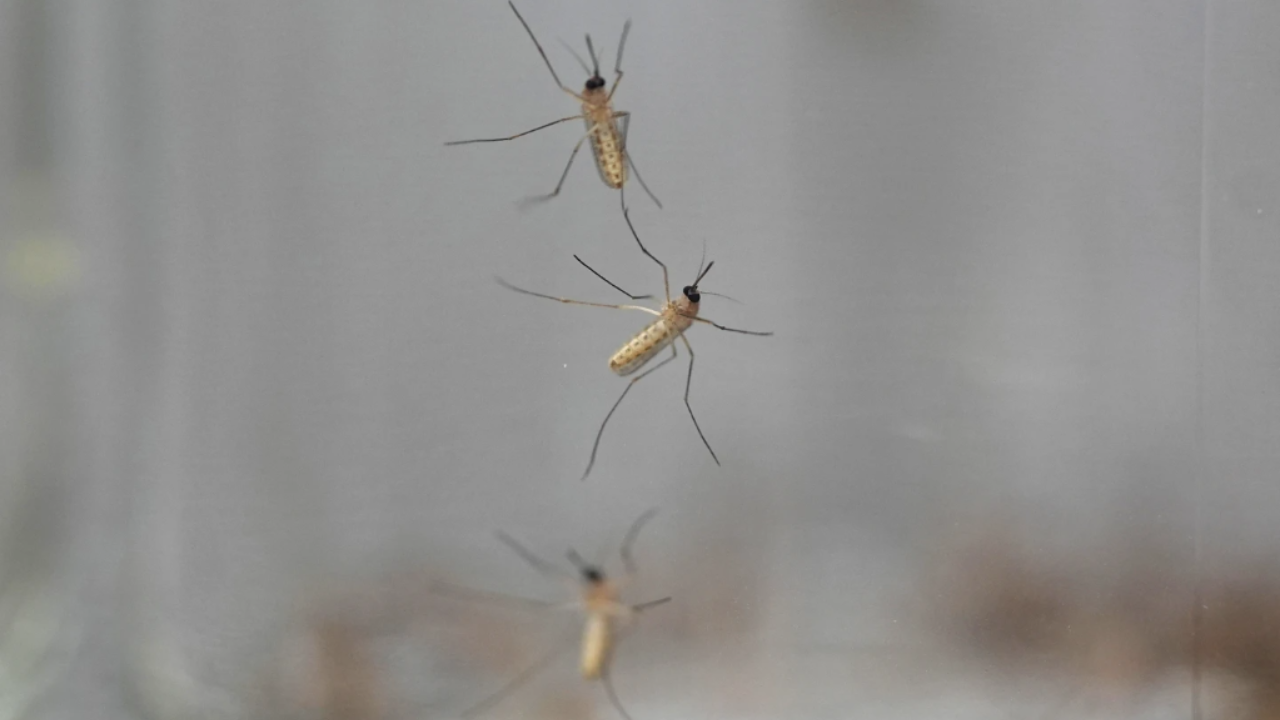
©(AP Photo/David Zalubowski, File)
Pre-reading questions:
I will read each question. Then, please answer them.
- What animals or insects do you often see near your home?
- What could happen if people and wild animals lived close to each other?
Vocabulary:
I will read the words, meanings, and sample sentences. Then, repeat after me.
- trap /trap/
- attic /AT-ik/
- vent /vent/
- rehabilitator /ree-huh-BIL-uh-tay-ter/
- nuisance /NOO-suhns/
[noun] – a device used to catch and hold animals or things
The farmer set traps to catch rabbits eating his vegetables.
[noun] – a space or room just below the roof of a building
Old clothes and books were stored in the attic for many years.
[noun] – an opening that allows air to enter or leave a space
The air conditioner pushes cool air through the vent.
[noun] – a person who helps injured or sick animals recover and return to the wild
The rehabilitator cared for the injured owl until it could fly again.
[noun] – something or someone that causes trouble or annoyance
City officials are finding new ways to manage nuisance birds that damage buildings and public spaces.
Article reading:
Please read the whole article. Then, I will check your pronunciation and intonation.
Increasing public concern about harmful pest control methods has led specialists to recommend safer and more sustainable practices. Sticky-tape bands on tree trunks, used to stop pests such as spotted lanternflies, have been criticized for trapping non-target animals like butterflies, bees, and birds, which may suffer serious injury or death. Glue traps, which hold animals until they die, have also been condemned by wildlife experts. Recent cases, including squirrels entering attics through open vents, highlight the importance of prevention. Wildlife rehabilitators advise sealing entry points before infestations begin to protect both people and animals. Other recommended strategies include removing standing water to prevent mosquito breeding, applying biological controls like Bacillus thuringiensis israelensis, and keeping properties less inviting to wildlife.
Specialists point out that so-called nuisance animals—such as squirrels, raccoons, and bats—are often forced from their habitats due to urban development. Preventive actions like sealing gaps, installing chimney caps, and securing waste containers are seen as ethical and effective. Authorities caution against relocation because many animals do not survive or may return from long distances. Pest control professionals suggest starting with the least toxic measures, increasing only if the problem continues. This includes using bait stations for ants and cockroaches and snap traps for rodents to ensure a quick and humane death and maintaining clean, well-sealed spaces to avoid future infestations. Experts stress that humane prevention reduces environmental harm and supports coexistence between humans and wildlife.
Specialists point out that so-called nuisance animals—such as squirrels, raccoons, and bats—are often forced from their habitats due to urban development. Preventive actions like sealing gaps, installing chimney caps, and securing waste containers are seen as ethical and effective. Authorities caution against relocation because many animals do not survive or may return from long distances. Pest control professionals suggest starting with the least toxic measures, increasing only if the problem continues. This includes using bait stations for ants and cockroaches and snap traps for rodents to ensure a quick and humane death and maintaining clean, well-sealed spaces to avoid future infestations. Experts stress that humane prevention reduces environmental harm and supports coexistence between humans and wildlife.
Comprehension questions
I will read each question. Then, please answer them based on the article.
- What are sticky-tape bands used for?
- Which animals can be hurt by sticky-tape bands besides pests?
- Why do wildlife experts criticize glue traps?
- What do wildlife rehabilitators advise doing before infestations begin?
- Why do authorities warn against relocating animals?
Discussion questions
I will read each question. Then, please answer them.
- Have you ever seen an animal or insect in your house? If so, what did you do? If not, what would you do if it happened?
- Have you ever used something to keep pests away from your home or garden? If so, what did you use? If not, what method do you think would work best?
- Do you agree that sealing entry points is better than removing pests after they come inside?
- Why do you think experts recommend using the least toxic pest control methods first?
- What can people do to make their homes less attractive to animals?